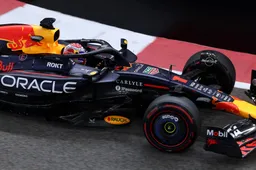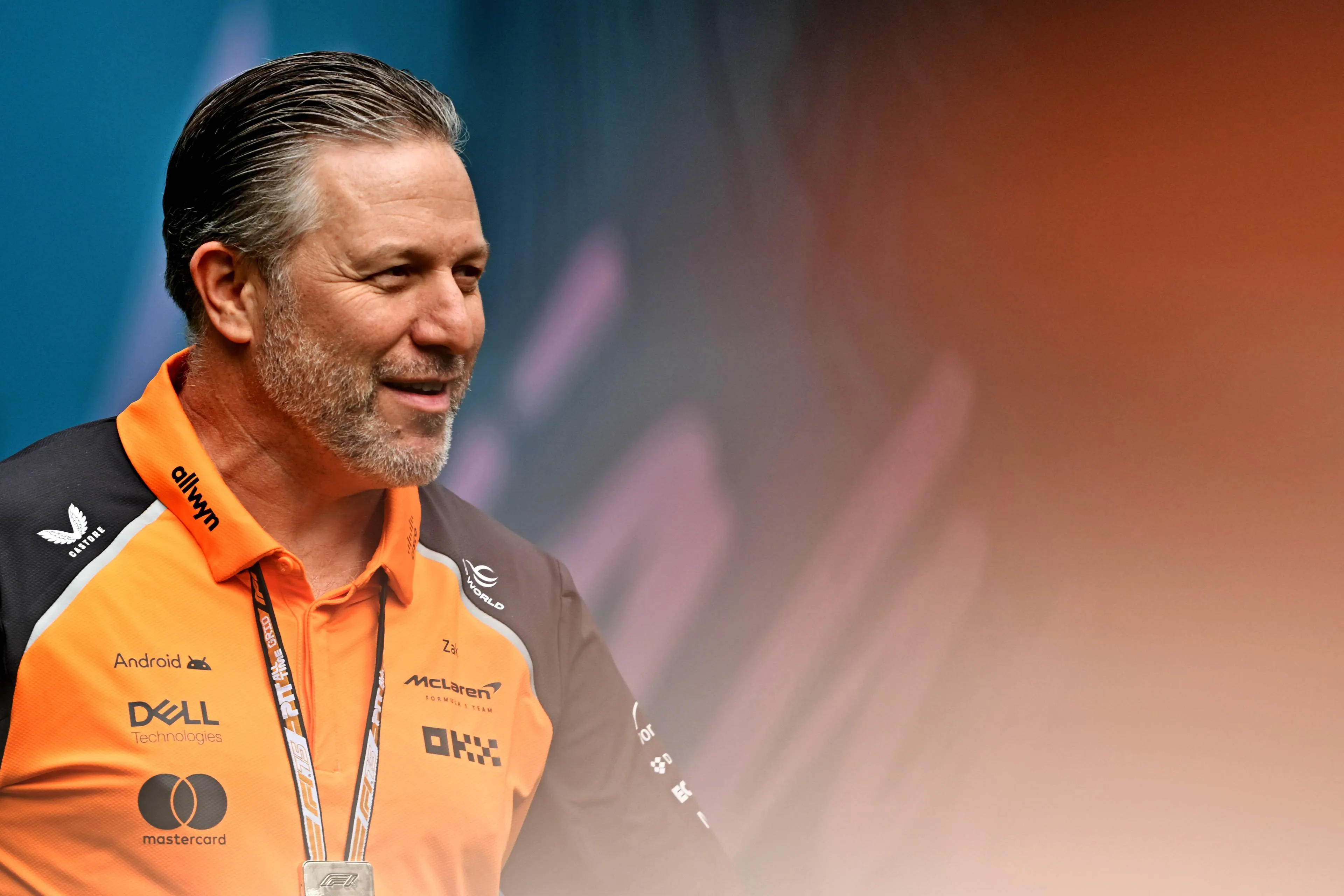F1 Stand
Season
| Pos. | Team | Points |
|---|---|---|
1 |  McLaren McLaren | 833 |
2 |  Mercedes AMG F1 team Mercedes AMG F1 team | 469 |
3 |  Red Bull Racing Red Bull Racing | 451 |
4 |  Ferrari Ferrari | 398 |
5 |  Williams Williams | 137 |
6 |  Racing Bulls Racing Bulls | 92 |
7 |  Aston Martin F1 team Aston Martin F1 team | 89 |
8 |  Haas F1 Haas F1 | 79 |
9 |  Stake F1 team Stake F1 team | 70 |
10 |  Alpine F1 team Alpine F1 team | 22 |
Mid-Engine Without a Title
Renault was long known for its traditional yellow car, but since the rebranding, the yellow colors have not been as dominant on the car since 2021. The 1.5-liter Renault-Gordini V6 engine (including turbo) was the pinnacle in terms of engine technology, though it suffered from reliability issues. Due to the yellow colors and the amount of smoke regularly coming out of the car, Renault dubbed their first car the “yellow teapot.” This image is one the team still struggles to shake off. When Alain Prost joined the team for the 1981 season, Renault’s fortunes started to turn around. The team began winning races and earning podiums, but the French team still couldn’t surpass second place in the Constructors' Championship in 1983. This also marked Prost’s final year at Renault, though not without controversy. Prost believed that Renault hadn’t gotten the most out of their car and regularly criticized his bosses, leading to his departure. However, Prost was back on the grid in 1984, this time alongside Niki Lauda at McLaren.
Exit, Return, and Exit Again
While many smaller names eventually disappeared from Formula 1 due to financial issues, Renault could not keep its head above water. The parent company had to cut back, making it impossible to maintain an expensive Formula 1 team. In 1986, Renault tried to survive by stepping back and only supplying engines to other teams on the grid. By the end of the year, Renault had disappeared from the sport. Three years later, Renault engines returned to Formula 1, but it didn’t go beyond that until 2000. In that year, the French company bought the Benetton team and renamed it Benetton Renault Sport. A year later, the Benetton name was dropped, and the Renault F1 Team returned to the grid. The results were nowhere near as good as in the glory years, but it was just a matter of time. World Titles and ‘Crashgate’ The team acquired Fernando Alonso in 2003, bringing a fresh perspective to the team. That year, Renault finished fourth (with a victory in Hungary), and a year later, they claimed third in the Constructors’ Championship. With Alonso as their driver, the team won both the Constructors' and Drivers' Championships in 2005 and 2006, marking the end of Alonso’s tenure at Renault. After two titles, Alonso left for McLaren. A year later, Alonso returned, but Renault couldn’t replicate the success of previous years. A constant change in drivers, as had been the case in recent years, didn’t help the situation. When it was revealed that Nelson Piquet Jr. deliberately crashed during the 2008 Singapore Grand Prix to give Alonso the win, panic broke out within the team. The flamboyant team principal, Flavio Briatore, left the team, and it was uncertain whether Renault would even be allowed to stay in Formula 1. After ‘Crashgate,’ things quickly went downhill. Sponsors left, and shares were sold. Eventually, Renault’s name remained on the car, but a year later, that too disappeared, and Renault was only an engine supplier.
From Renault to Alpine
With the success of Red Bull Racing (and Renault’s engine in their cars) and financial issues at Lotus, Renault decided in late 2016 to return as a factory team. With young drivers Kevin Magnussen and Jolyon Palmer, the French team began the long, slow road back to the top. Four years and many driver changes later, Renault had failed to find its way back to Formula 1 and the team name “Renault” disappeared from the sport for good. After these fluctuating years, Renault F1 was renamed Alpine F1 Team in 2021 as part of a strategy to enhance the sporty image of the Alpine brand. Alpine had a strong start with a victory by Esteban Ocon in the 2021 Hungarian Grand Prix, followed by a series of solid performances in the subsequent seasons. However, the team also faced fluctuating results and internal challenges, preventing them from consistently competing in the upper midfield of the championship.
Alpine 2025
For the 2025 season, Alpine has chosen a combination of experience and young talent. Pierre Gasly remains as the team’s lead driver, while Jack Doohan makes his Formula 1 debut, replacing the departing Esteban Ocon who moved to Haas. Additionally, the team has acquired the Argentine talent Franco Colapinto from Williams Racing as their reserve driver for 2025 for a significant sum.
Alpine 2024
The 2024 season was full of challenges for Alpine. The team spent much of the season in the lower half of the Constructors’ Championship, showing a significant decline compared to 2023. However, things changed at the São Paulo Grand Prix, which became an absolute highlight for Alpine this season. In wet conditions, the team executed a near-perfect strategy, and drivers Esteban Ocon and Pierre Gasly surprised everyone by finishing on the podium (second and third). These results helped Alpine salvage the season, finishing sixth in the Constructors’ Championship with 65 points.
Alpine Livery 2025
Alpine revealed the livery of the A525 during the joint launch event on February 18, celebrating the 75th anniversary of the sport. All ten teams were present at the O2 Arena in London, where they unveiled their 2025 car liveries in front of thousands of fans.
Alpine F1 Team Lego
Last year, during the Las Vegas Grand Prix, an exhibition was held by the Danish toy company Lego. Thanks to a new collaboration with Formula 1, building kits of the Alpine F1 Team and all other teams from the 2024 championship are available for purchase, in a scale of about 1:24.
Which Engine Does Alpine Use in F1?
All of Renault’s past collaborations with F1 teams have ended. Red Bull Racing switched to Honda in 2019, and McLaren will use Mercedes engines again in the coming season. Alpine is the only team on the grid still using the French Renault engines. However, starting in 2026, Alpine will switch to Mercedes engines when the new engine regulations come into effect.
Alpine F1 News
Stay up-to-date with the latest news about the Alpine F1 Team and drivers Pierre Gasly and Jack Doohan through this page. From official announcements, updates, and track performances to preparations and other activities during the off-season, you’ll read it all first on GPblog.com.
Popular on GPBlog

1
Three drivers with a 'new' number: This is the entry list for '26
3626 times read

2
Russell hits the slopes with partner Carmen Mundt after 2025 season
3125 times read

3
Hamilton's disastrous season at Ferrari hurts Verstappen a great deal
2184 times read

4
Ex-driver names one circuit he would axe from F1: ‘It's completely soulless’
1087 times read
Loading





